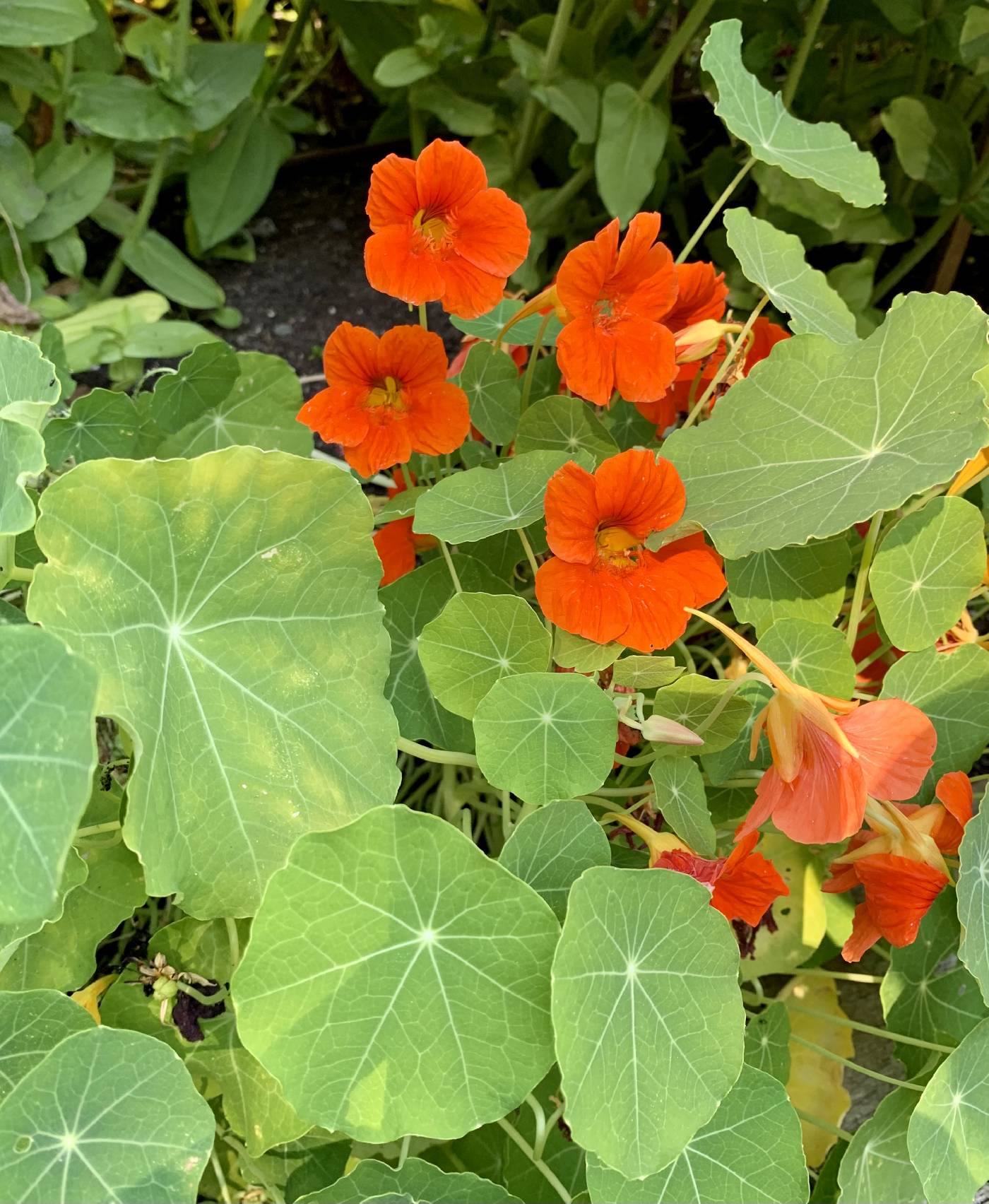
|
Tropaeolaceae |
|
|
Herbs, annual [perennial]; usually glabrous; roots fibrous [tuberous], (producing glucosinolates). Stems often trailing [climbing]; not branched. Leaves alternate, simple; usually stipules present; petiole present (often twining); blade (peltate), margins entire or sinuate. Inflorescences axillary, flowers solitary; bracts absent. Pedicels present. Flowers zygomorphic; sepals 5, imbricate, adaxial 1 (or 3) prolonged into slender nectariferous spur; petals 5 (sometimes fewer by abortion), imbricate, clawed, distal 2 smaller than the others; stamens 8, (barely exserted) in 2 whorls, unequal; anthers 2-celled, dehiscence longitudinal; pistil 1; ovary 3-carpellate, 3-locular; placentation axile; ovule (1 per locule, pendulous from apex), anatropous, bitegmic; style 1 (apical); stigmas 3, linear. Fruits schizocarps (mericarps), 1-seeded, fleshy or dry. Seeds 1, (greenish), ovoid; embryo straight; endosperm absent. Tropaeolaceae have sometimes been included in Geraniaceae; they differ in having distinct stamens, fruits that split into 1-seeded mericarps, and persistent stylar beaks. Molecular phylogenies have indicated placement in Brassicales, with which they share the production of glucosinolates. The nearest relative of Tropaeolaceae is, putatively, the Akaniaceae, a family of woody plants in eastern Asia and eastern Australia (L. Watson and M. J. Dallwitz, http://delta-intkey.com, 29 July 2006). The family has been divided into three genera by some (e.g., A. Cronquist 1981): Magallana and Trophaeastrum, both monotypic and restricted to southern South America, and Tropaeolum with the remainder of the species. L. Andersson and S. Andersson (2000), based on molecular sequence data, concluded that the former two genera are imbedded within Tropaeolum, and made the needed transfers so that the family consists now of a single genus.
|
|
This project was made possible in part by the Institute of Museum and Library Services [MG-70-19-0057-19].
Powered by Symbiota


